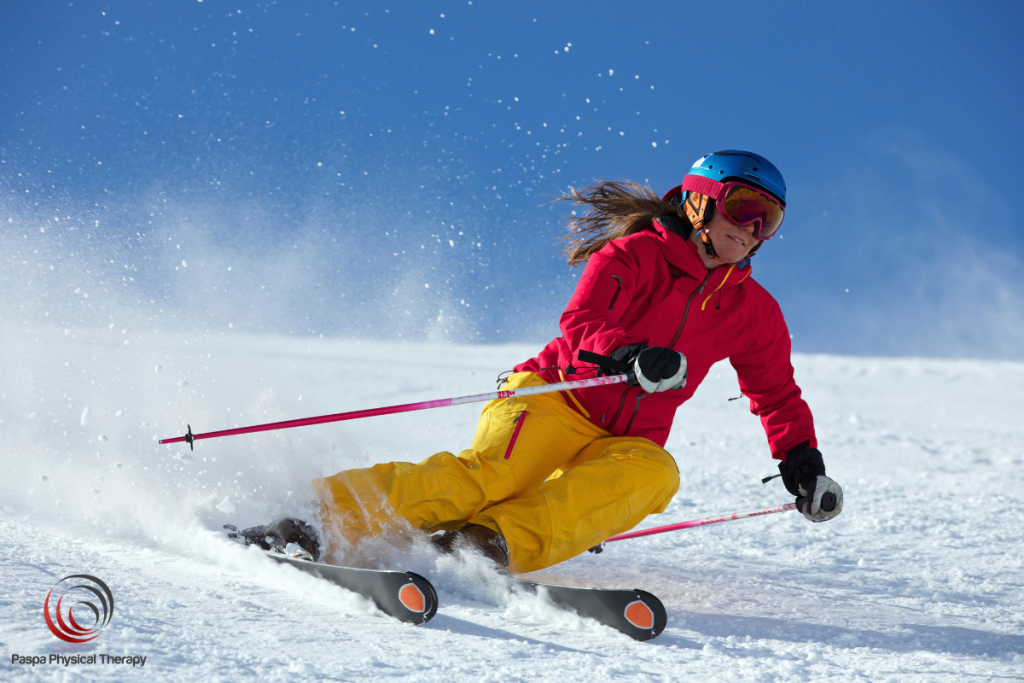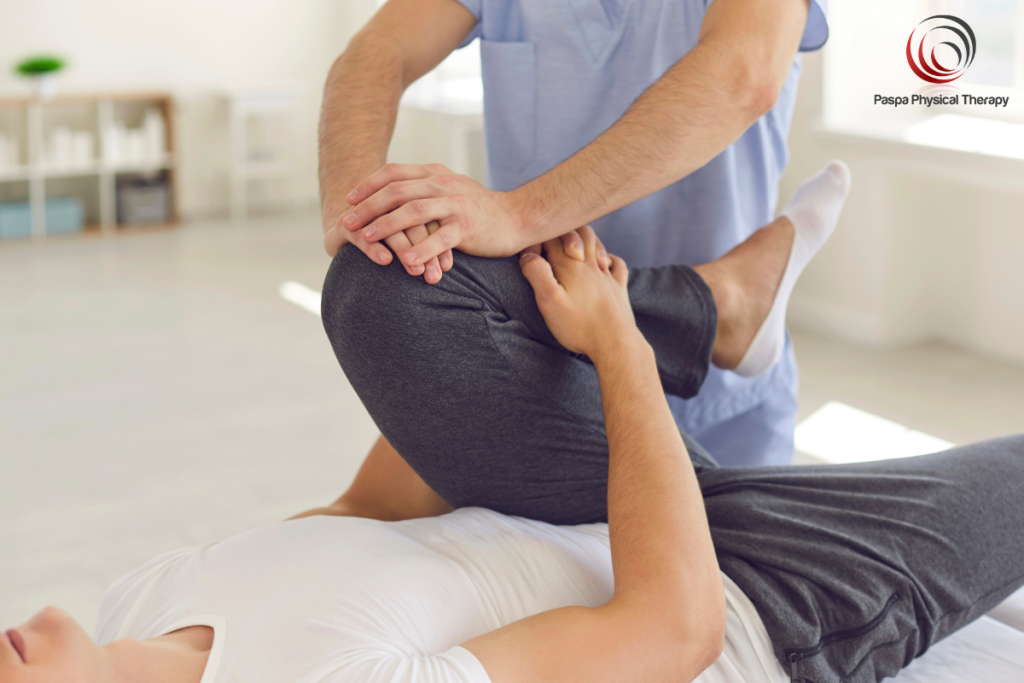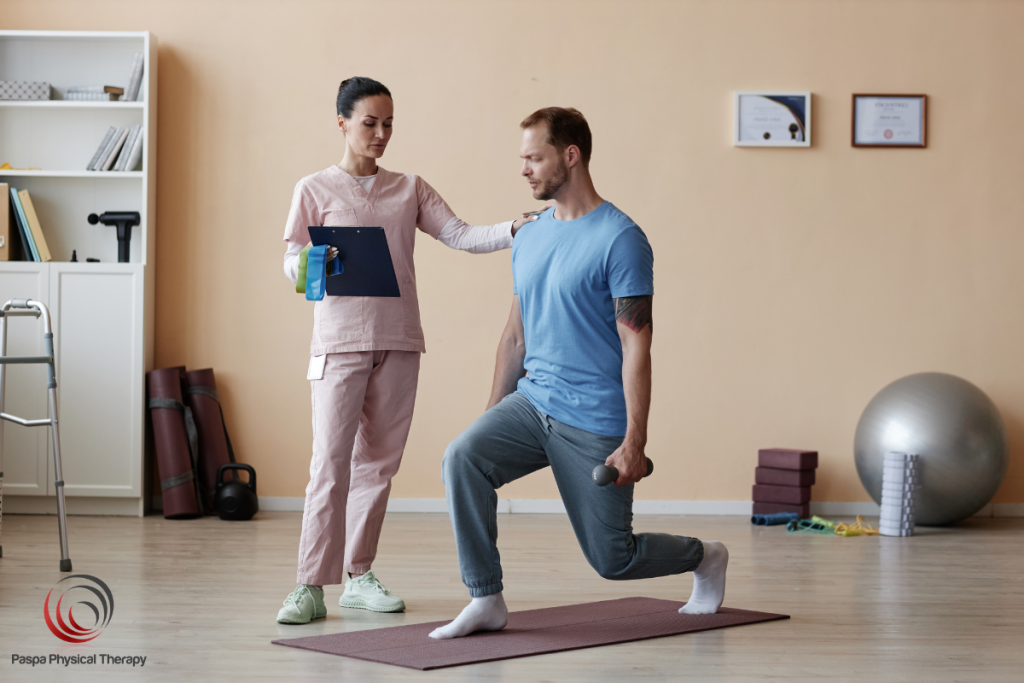Getting Ready for Ski Season
Whether you’re a first-time skier, a recreational skier who enjoys occasional ski trips, or someone eager to take on more challenging slopes, preparing your body and equipment ahead of time is essential. In this article, we’ll discuss the importance of preseason conditioning, functional ski exercises, strength and cardio workouts, and how to check and select the right equipment to stay safe and maximize performance on the slopes.
At Paspa Physical Therapy in Manhattan, NY, our physical therapists provide one-on-one care and have many years of experience. We can help you get ski-season ready, recover from injuries, and build confidence in your movement. If you’re planning a ski trip this winter, consider scheduling an appointment with our team to prepare your entire body for the demands of skiing.

About Skiing
Skiing is both a thrilling sport and a full-body workout. It requires coordination of the lower body, upper body, and core muscles to maintain balance, control speed, and maneuver down the mountain in a safe ski shape.
Skiers must be able to stabilize in a squat position, shift weight from one leg to the other, and keep their knees slightly bent while adapting to constantly changing snow and terrain. For recreational skiers, the sport can be a fun way to stay active during winter, but without preparation, the slopes can place significant stress on the joints and muscles.

The Importance of Training for Ski Season
Jumping straight into skiing without preseason training and preparation can increase the risk of injuries, particularly knee injuries, sprains, or strains. Even for recreational skiers who hit the slopes just a few times each year, preseason training is vital.
Building aerobic fitness and core strength helps your body handle the physical demands of skiing. Stronger core muscles improve balance, while endurance training ensures you won’t tire after only a few runs. Preseason conditioning also prepares your joints—especially the knees, hips, and ankles—to withstand the repetitive, twisting motions of skiing.
How to Prepare for Ski Season
The following are tips on how to prepare for ski season.
Getting the Right Equipment
Before focusing on fitness, make sure you have the proper gear. Essentials include a helmet to protect against head injuries, goggles to shield your eyes, gloves, and layers made from synthetic fabrics that stay dry. A neck gaiter, sunscreen, and hydration pack are also recommended.
Checking Your Equipment
If you already own equipment, inspect it before your ski trip. Check bindings, skis, or boards for wear and make sure boots fit comfortably. Test your goggles for scratches, look for tears in your outerwear, and consider a professional tune-up for your skis. A secure, functional setup reduces the risk of falls and injuries.
Practicing Functional Movements
Skiing involves repetitive functional movements, bending at the knees, shifting weight from the left foot to the right foot, and using your upper body for balance. Practicing these motions in your preseason workouts will help you feel more confident once you’re on the slopes.
A simple drill:
- Starting position: Stand with feet shoulder-width apart, knees slightly bent.
- Shift weight onto the left leg, keeping the right leg straight.
- Then return to the center and repeat on the other leg.
This mimics the constant side-to-side transitions of skiing. Practicing these movements before your trip will make skiing more intuitive.
Practicing to Control the Motion
Control is critical in skiing. Without it, you risk falls or collisions. Work on exercises that strengthen your ability to slow down and stop in a straight line or ski shape. Try bodyweight squats, pausing in the squat position with knees slightly bent, then standing tall again. This builds lower-body endurance while reinforcing proper ski posture.
Exercises to Get Ready for Ski Season
The following are strength and conditioning exercises that help with preparing for ski season.
Core and Balance
A strong core is essential for skiing. Ski exercises like planks, side planks, and mountain climbers build core strength and help you maintain stability while skiing on uneven terrain.

Lower Body Strength
Your lower body powers every movement on the mountain. Focus on ski workouts that build quadriceps, hamstrings, and glutes. Examples include:
- Squats: Feet hip-width apart, lower into a squat position, then rise.
- Jump squats: Begin in a squat position, then jump explosively, landing softly with knees slightly bent.
- Single leg deadlift: Stand on one leg, extend the other leg straight behind, hinge at the hips, then return to standing. This improves balance and strengthens stabilizers around the hips and knees.
Endurance and Cardio Workouts
Skiing is an aerobic activity, so endurance training is key. Incorporate cardio workouts, such as cycling, running, or stair climbing, at least two to three times a week. Interval training—alternating between high and low intensity—can mimic the bursts of effort required on the slopes.
Functional Ski Workouts
A good ski workout integrates strength, endurance, and balance. Sample ski exercises:
- Lateral jumps: Jump side to side over a straight line, landing with knees slightly bent.
- Mountain climbers: From a plank position, drive the right knee and left knee alternately toward the chest while keeping the upper body steady.
- Lunges: Step the right leg forward, left leg back, lowering into a lunge with the right knee bent and the back leg straight. Alternate with the other leg.
These exercises target the entire body while replicating the mechanics of skiing.
Personalized Physical Therapy and Ski Prep
While general ski workouts can be effective, every skier’s body is different. At Paspa Physical Therapy, we design personalized physical therapy programs tailored to your fitness level and goals. Our one-on-one care ensures that each exercise is done correctly, reducing the risk of strain or injury.
Unlike other clinics, we do not rely on aides or assistants—only licensed physical therapists guide your treatment. With our private treatment rooms and full gym, you’ll receive a comprehensive ski conditioning plan that prepares your entire body for the season ahead.
Make This Ski Season Your Best Yet
If you’re ready to start training for ski season, don’t wait until the snow falls. At Paspa Physical Therapy in Manhattan, New York, we specialize in personalized, one-on-one care that helps recreational skiers and seasoned athletes alike. Schedule your appointment today and get ski-season ready with the help of our expert physical therapists!
